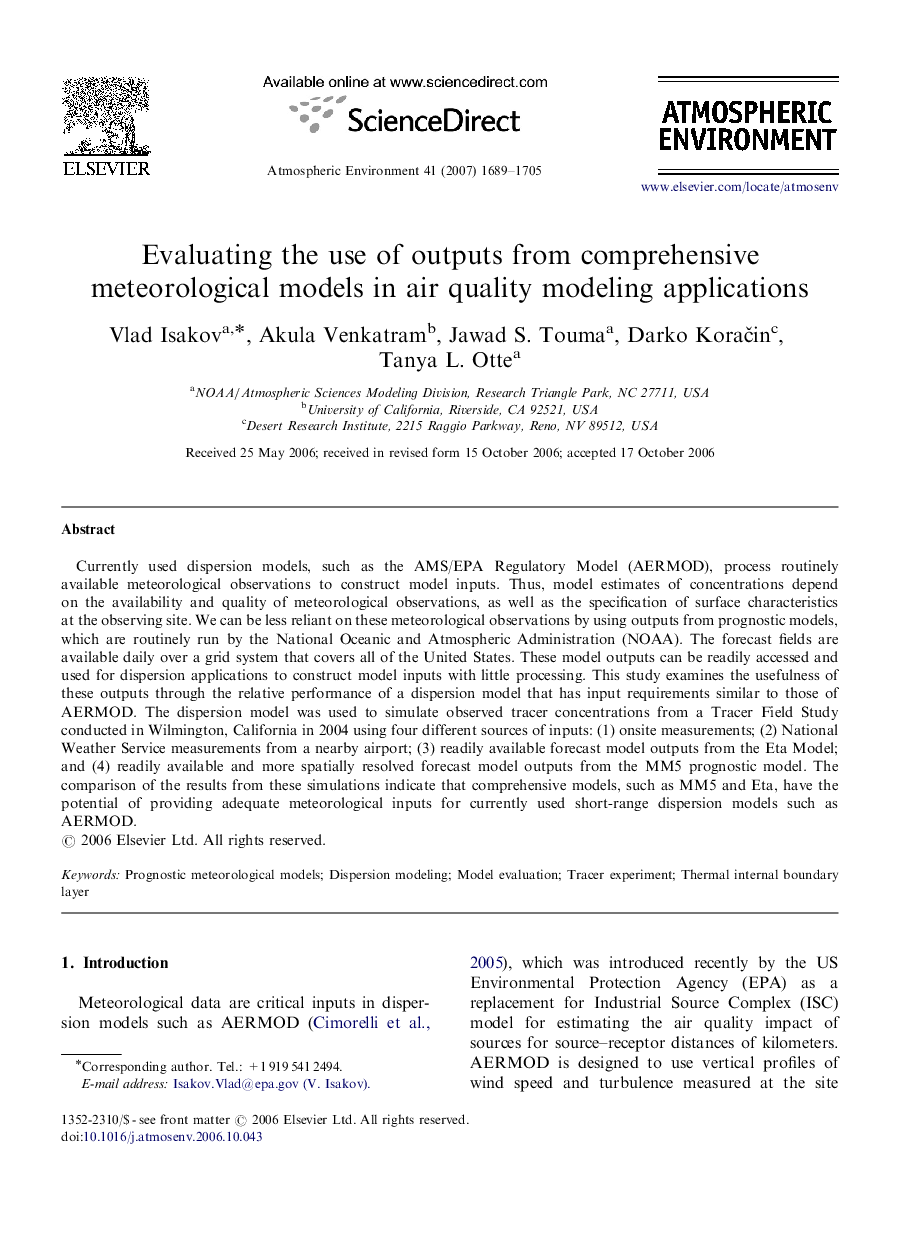| Article ID | Journal | Published Year | Pages | File Type |
|---|---|---|---|---|
| 4444023 | Atmospheric Environment | 2007 | 17 Pages |
Currently used dispersion models, such as the AMS/EPA Regulatory Model (AERMOD), process routinely available meteorological observations to construct model inputs. Thus, model estimates of concentrations depend on the availability and quality of meteorological observations, as well as the specification of surface characteristics at the observing site. We can be less reliant on these meteorological observations by using outputs from prognostic models, which are routinely run by the National Oceanic and Atmospheric Administration (NOAA). The forecast fields are available daily over a grid system that covers all of the United States. These model outputs can be readily accessed and used for dispersion applications to construct model inputs with little processing. This study examines the usefulness of these outputs through the relative performance of a dispersion model that has input requirements similar to those of AERMOD. The dispersion model was used to simulate observed tracer concentrations from a Tracer Field Study conducted in Wilmington, California in 2004 using four different sources of inputs: (1) onsite measurements; (2) National Weather Service measurements from a nearby airport; (3) readily available forecast model outputs from the Eta Model; and (4) readily available and more spatially resolved forecast model outputs from the MM5 prognostic model. The comparison of the results from these simulations indicate that comprehensive models, such as MM5 and Eta, have the potential of providing adequate meteorological inputs for currently used short-range dispersion models such as AERMOD.
